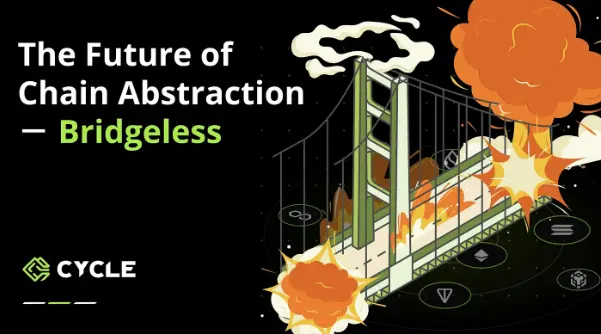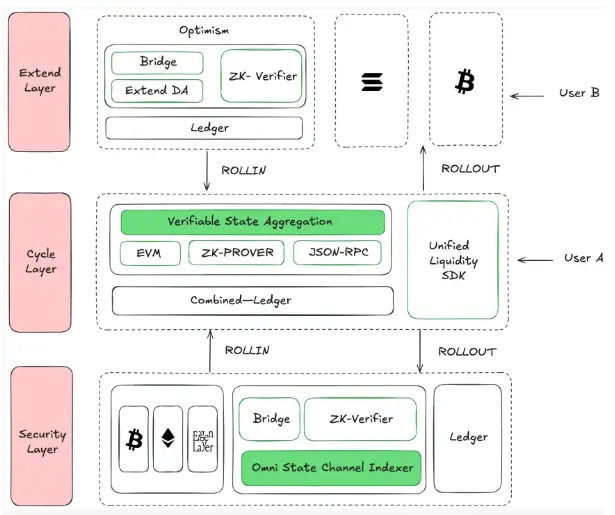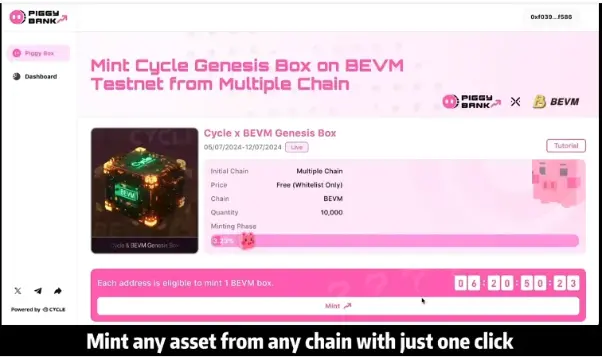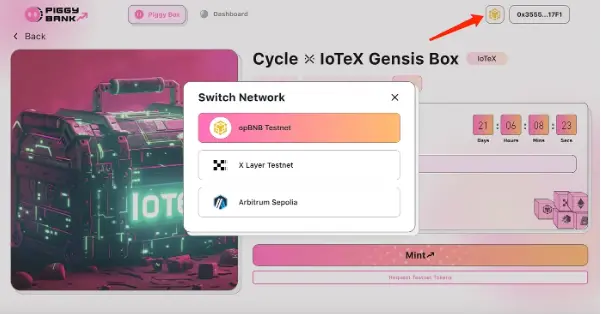
As the blockchain technology continues to develop, the ecosystem of multi-chain coexistence is growing, providing users with various choices. Unlike Bitcoin's Proof of Work (PoW), Proof of Stake (PoS) reduces the cost of network launch and maintenance, promoting the increase of innovative projects. However, diversity brings about fragmentation in liquidity and usage, affecting user experience. The economic incentive measures of different projects exacerbate this phenomenon, as developers are more inclined to create new chains rather than develop on existing ones.
In Web3, cross-chain interactions rely on insecure or centralized tools, lacking a unified secure and efficient management protocol. This is different from the seamless and secure communication of applications in Web2 through standardized protocols (such as HTTP). Cross-chain interactions in Web3 often require bridging or centralized exchanges, adding complexity and potential security risks. Cross-chain bridges involve locking assets and minting equivalent tokens on the target chain, promoting asset mobility but also introducing operational complexity and security risks, leading to increasing losses due to cross-chain bridge attacks each year. The complexity of these operations makes new users hesitant and forces existing users to return to centralized off-chain applications. Why must products between chains rely on bridging?
To address this issue, the concept of chain abstraction emerged. Chain abstraction aims to enhance interoperability and user experience by simplifying interactions between users and different blockchains through providing a unified interface and tools.
When Cycle Network was established in October 2022, the concept of chain abstraction had not been formally defined. Cycle Network is committed to solving the problems of multi-chain fragmentation and fund fragmentation, hoping to improve users' on-chain experience and provide a more secure and efficient cross-chain solution. Through bridgeless technology, Cycle Network is striving to achieve a more connected and user-friendly blockchain ecosystem, paving the way for future blockchain applications.
Bridgeless embedded experience is the true chain abstraction
Although decentralized mechanisms are the most secure algorithms, they have not been widely adopted due to the complex operations required by Web3. Realizing this, the Cycle Team is continuously working towards this direction, all before the term "chain abstraction" came into being.
With the spread of the concept of chain abstraction, more and more projects are beginning to explore its potential. Each project has its own innovations in chain abstraction solutions, some providing a universal account system that allows users to access multiple blockchains through a single account, while others use cross-chain bridge aggregators to integrate multiple cross-chain bridge protocols. The Cycle Network team adopts a decentralized, bridgeless solution to seamlessly connect all blockchains. With the emergence of Layer 2 solutions and numerous chains, this innovation ensures that end users and developers are no longer isolated or fragmented, and can share liquidity, pay fees, and sign transactions without relying on traditional bridging.
The integration of Cycle Network is crucial for end users and developers. These two are the most critical participants in the Web3 ecosystem, and Cycle Network's decentralized bridgeless transaction process provides them with great convenience.
Decentralized bridgeless transaction process
The core technology of Cycle Network utilizes a multi-layer architecture based on Verifiable State Aggregation (VSA), combining security layer, scalability layer, and Cycle layer to facilitate seamless cross-chain transactions. The system uses zk-rollup technology to aggregate transactions into batches, which are then processed by zk-rollup nodes, generating zk proofs to verify transactions without exposing their detailed information. The Verifiable Aggregated Sorter sorts and packages these batches, ensuring efficient processing of transactions.
Next, the Omni State Channel Indexer (OSCI) performs decentralized indexing to ensure the availability and verifiability of the state of each transaction. Verified transaction records are stored on the Cycle layer, making it possible to perform direct cross-chain data operations through a single SDK interface. Finally, updates to the Cycle layer are broadcast back to their respective chains, reflecting asset transfers or smart contract executions, ensuring that information across the network is consistent and up to date.
This approach not only enhances security and integrity, but also reduces transaction costs, and supports seamless interoperability between different blockchain architectures (including EVM and non-EVM chains, as well as Layer 2 solutions). The innovation of Cycle Network undoubtedly injects new vitality into the blockchain ecosystem and promotes the widespread application of decentralized technology.

Practical applications of bridgeless solutions
The decentralized bridgeless solution seamlessly connects all blockchains, eliminating intermediary steps and reducing potential security risks. This approach provides significant benefits for emerging and existing blockchain platforms, end users, and developers.
Piggy Bank is a pioneering all-chain asset management platform that fully utilizes Cycle Network, providing a revolutionary asset management experience. As a flagship product, Piggy Bank simplifies the use of blockchain, becoming an encrypted asset management tool accessible to everyone. It offers a bridgeless experience, utilizing Cycle's all-chain liquidity sharing solution to automate and optimize investment strategies across multiple chains.
For end users
All-chain bridgeless user experience
Piggy Bank effectively eliminates the complexity of different chains for Web3 and Web2 users. Users can easily manage, trade, invest, and mint assets without worrying about the complex details of various chains, fuel tokens, or third-party bridging. This seamless experience allows users to handle their encrypted assets as easily as managing traditional financial products.
Aggregation of high-yield platforms across all chains
Piggy Bank aggregates DeFi protocols from any network (such as L1, EVM, non-EVM, BTC L2) through Cycle Network. Through AI-driven analysis, Piggy Bank can assess security, returns, and stability, and recommend personalized investment strategies. Users can simply select investment options with a single click, enabling them to achieve higher returns through cross-chain aggregation and compounding.
This innovation not only enhances user experience but also brings new possibilities for encrypted asset management. The successful example of Piggy Bank demonstrates the importance of bridgeless solutions in driving the development of the blockchain ecosystem, deserving high praise.
Diversified asset categories
Piggy Bank supports various asset categories through the integration of Cycle's all-chain DeFi hub, showcasing its leading innovation capabilities. Users can manage not only physical assets such as real estate and art, but also access various financial derivatives (such as options, futures, leveraged tokens), and engage in asset lending and liquidity mining across all chains, demonstrating its wide range of applications.
For developers
Shared liquidity pool
The integration of Piggy Bank with Cycle's liquidity aggregator consolidates dispersed liquidity resources into a shared pool, significantly enhancing overall liquidity and capital efficiency. This approach maximizes returns and simplifies liquidity management, providing strong support for developers.
Security and low cost
Cycle Network provides Piggy Bank with a unified interface and protocol, greatly simplifying blockchain operations and integration. The shared liquidity pool not only reduces the risks associated with single-chain financing but also minimizes potential fraud, demonstrating its advantages in security and cost-effectiveness.
Example: Bridgeless minting of NFTs
The highly anticipated Piggy Box event of Piggy Bank attracted over 246,000 accounts, with nearly 190,000 assets minted in a bridgeless manner. Users from any chain can mint assets with a single click without leaving their native chain, demonstrating its seamless user experience. Transactions, fees, and signatures are seamlessly processed on the user's preferred chain, greatly enhancing user convenience.
Collaboration with BEVM
Cooperation with BEVM - the first fully decentralized EVM-compatible Bitcoin L2, using BTC as fuel - highlights the power of Cycle Network's bridgeless solution. In just three days, it attracted 40,000 new users who were able to seamlessly mint BEVM Genesis Boxes without the need for cross-chain operations or fees. This achievement demonstrates the advantages and user-friendliness of Piggy Bank in real-world applications.

IoTeX Partnership
The partnership with IoTeX also demonstrates the powerful functionality of Cycle Network's bridgeless solution in practical applications. In a recent testnet NFT minting event, users were able to directly mint IoTeX testnet assets from various blockchains and received exclusive Genesis Boxes after completing the minting experience, unlocking lucrative rewards within the Cycle Network ecosystem. Within two days, 5,000 NFTs were minted through Piggy Bank, allowing users from any chain to participate and eliminating the complexity of cross-chain interactions.

Open Bridgeless SDK
Based on these successful partnerships, Cycle Network's decentralized bridgeless information transmission has successfully served multiple emerging chains, helping applications break free from the limitations of specific chains and achieve seamless operations across multiple blockchains. This capability is crucial for developers seeking to expand their influence and user base. Currently, the bridgeless SDK is open to any EVM chain and DApp, allowing developers to provide a bridgeless experience for users without any fee restrictions, showcasing its leadership position in the industry.
Conclusion
Cycle Network focuses on achieving chain abstraction through bridgeless cross-chain solutions, providing a secure and simplified alternative that effectively addresses the interoperability challenges of traditional cross-chain bridges. By utilizing zk-rollup technology and aggregated sorters, Cycle Network has brought a new cross-chain experience to developers and users, meeting diverse cross-chain needs.
This chain abstraction-based approach successfully overcomes the complexity and fragmentation in a multi-chain environment, providing strong support for the widespread adoption and interoperability of blockchain.
With the continuous advancement of blockchain technology and the maturation of multi-chain environments, Cycle Network has demonstrated a firm commitment to further developing chain abstraction and cross-chain technology, aiming to overcome existing limitations and explore new application areas. This forward-looking exploration will undoubtedly drive the development of the entire blockchain ecosystem.
免责声明:本文章仅代表作者个人观点,不代表本平台的立场和观点。本文章仅供信息分享,不构成对任何人的任何投资建议。用户与作者之间的任何争议,与本平台无关。如网页中刊载的文章或图片涉及侵权,请提供相关的权利证明和身份证明发送邮件到support@aicoin.com,本平台相关工作人员将会进行核查。




